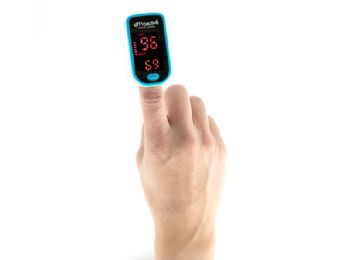
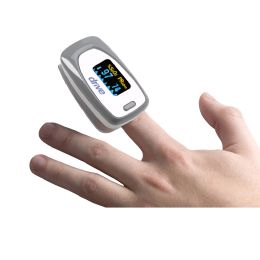
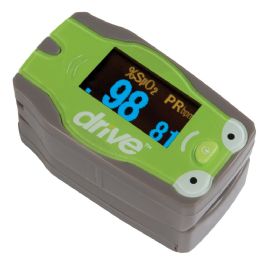
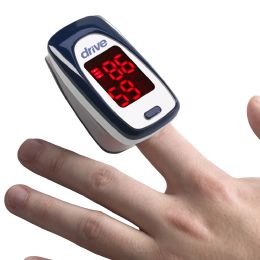
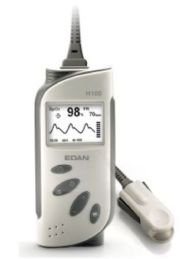
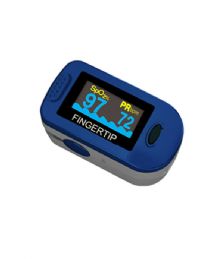
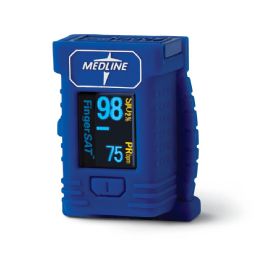

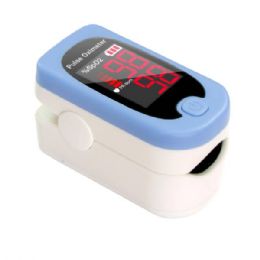

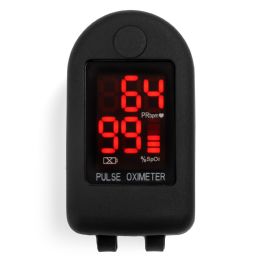
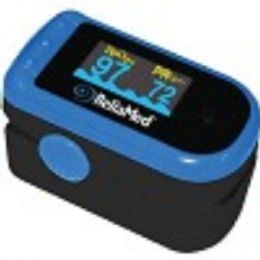
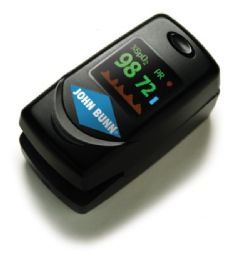
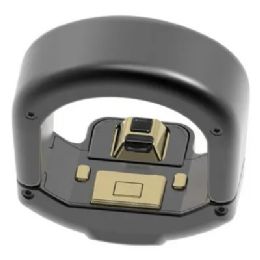
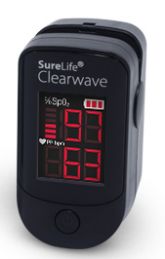
What is Pulse Oximetry? Why is it Important?
Pulse oximetry is a non-invasive method for indirectly monitoring a person's oxygen (O2) saturation, as opposed to measuring blood gases directly through a blood sample. It is considered a painless, general indicator of oxygen delivery to body tissues. Most commonly, a sensor device called a pulse oximeter is placed on a thin part of the patient's body. For example, on a fingertip or earlobe of an adult or pediatric patient, or across an infant’s foot.
Oxygen is the fuel your body uses to work properly. It is in the air we breathe into our lungs. The oxygen passes into the blood where the majority of it attaches to hemoglobin (a protein located inside the red blood cell) for transport in the bloodstream. The oxygenated blood circulates to the tissues of the body. To run smoothly, all of the cells and organs in our bodies require sufficient oxygen at all times.
Most people need an oxygen saturation level of at least 89% to remain healthy, though the normal range is considered from 95 to 99 percent at sea level for patients without pulmonary pathology. A lower saturation for a short period of time is not believed to cause damage; however, frequent low oxygen levels may strain or damage your cells.
How Do Pulse Oximeters Work?
Hemoglobin has light-absorptive characteristics. The pulsating nature of blood flow in the arteries can be measured. Pulse oximetry technology utilizes these two known facts to aid in determining the oxygenation status in the body. First: Oxygen-rich hemoglobin in the arteries is bright red. Venous hemoglobin depleted of oxygen is darker. Second: There is a slight increase in the volume of blood flow with each pulsation or heartbeat. The amount of oxygen-rich hemoglobin blood in the arteries rises. This represents the maximum amount of oxygen-rich hemoglobin moving through the blood vessels.
A pulse oximeter is used to measure the blood that is saturated with oxygen. The device contains a light source, a light detector, and a microprocessor. It compares and calculates the differences in oxygen-rich and oxygen-poor hemoglobin that occur in the patient’s blood flow. The light source passes two wavelengths of light through the body to a photo detector, which measures the changes in light absorption at each wavelength. This allows the device to determine the ratio of red to infrared light absorption of pulsating components at the site of measurement.
The monitor displays the percentage of blood that is saturated with oxygen. Specifically, they measure what percentage of hemoglobin (the blood protein that carries oxygen) is loaded with oxygen. This “saturation of peripheral oxygen” reading is annotated as SpO2. The information helps the doctor assess the amount of oxygen being carried in the blood and evaluate the need for supplemental oxygen.
Who Uses Pulse Oximeters?
Pulse Oximeters are used in many settings, wherever it is important to check or monitor a person’s oxygen level. Pulse oximeters can be used for spot checks or for monitoring over a specific period of time. For example, they are often used during surgery to monitor the patient while under anesthesia. In hospital settings, pulse oximeters may be incorporated into multi-parameter patient monitors. This non-invasive monitoring capability is also used in hospital recovery rooms and many intensive care units.
The devices are of particular value in neonatal units where adequate oxygenation is required for the patients to thrive, but too much oxygen or fluctuations in oxygen concentration can lead to vision impairment or retinopathy of prematurity (ROP), resulting in blindness. Another use of pulse oximetry for newborn screening is to increase the detection of critical congenital heart disease (CCHD). Obtaining an arterial blood gas from a neonatal patient is painful to the patient and a major cause of neonatal anemia. Pulse oximeters provide a pain-free alternative in many situations.
Portable, battery-operated pulse oximeters, like the selections available through Rehabmart, are also used in hospital settings where multi-parameter monitors are not feasible. They are available for spot-checking on a patient ward, used during patient transport, in doctors’ offices and outpatient clinics, for blood-oxygen monitoring at home, and in many other environments like sports fields and gyms. They are useful for pilots operating in a non-pressurized aircraft above 12,500 feet (U.S.) where supplemental oxygen is required. They can also be useful for mountain climbers and athletes whose oxygen levels may decrease at high altitudes or with exercise.
Because of their simplicity of use and the ability to provide continuous and immediate saturation values, pulse oximeters are very useful for patients with respiratory or cardiac problems like COPD. They are also of critical importance in emergency medicine. Some Pulse Oximeters require a medical prescription, and some are available without one.
Pulse oximetry is a non-invasive method of measuring how much oxygen is carried in your blood. Using a small portable pulse oximeter to measure the oxygen saturation level provides a quick and pain-free alternative to drawing a blood sample to test blood gas levels. Pulse oximeters are useful for adult, pediatric and neonatal patients in a variety of healthcare environments. Portable, battery-operated pulse oximeters are also useful for patient transport or home blood-oxygen monitoring.
Rehabmart is pleased to present an assortment of superior quality portable pulse oximeters from vendors including Venni Medical, Respironics, McKesson Medical Surgical, Medquip, Drive Medical, Independence Medical, Medline, North Coast, Responsive Respiratory Inc. and My Supply Partners.
Mike Price, OT
Rehabmart Co-Founder & CTO